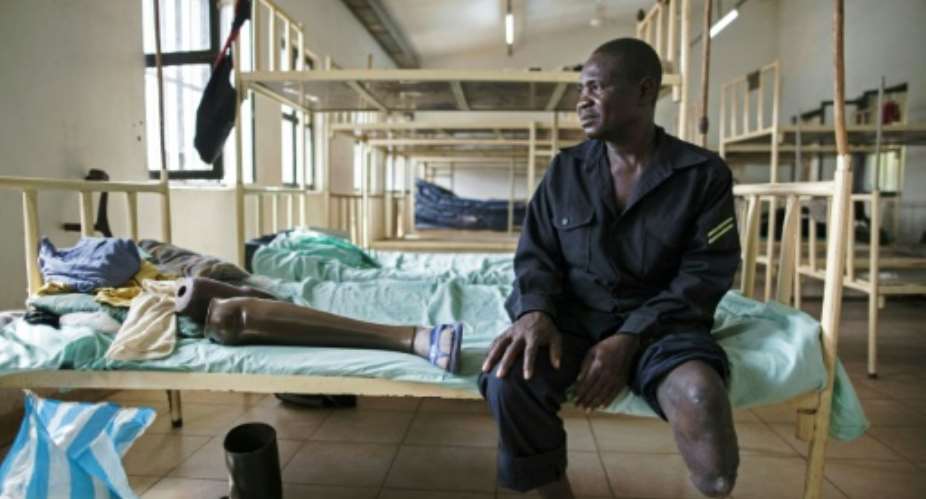At least 8,605 people were killed or injured by anti-personnel mines last year, a 150 percent rise in three years, with particularly high casualty figures in Afghanistan and Yemen, the Handicap International charity said Thursday.
"The vast majority of people killed by anti-personnel mines are civilians," making up 78 percent of the total in 2016 of whom 42 percent were children, according to a new report.
"We are witnessing an alarming upsurge in the use of mines, and an unacceptable increase in the number of mine casualties," said Aleema Shivji, executive director of Handicap International UK.
Mine casualties were recorded in 56 states and territories around the world last year.
The majority of new casualties of anti-personnel mines, factory-made or improvised, and of explosive remnants of war were recorded in Afghanistan, Libya, Syria, Ukraine and Yemen.
The 2016 figures also mark a 150 percent increase since 2013, when 3,450 dead or wounded were logged.
The total number of casualties is the biggest since the first annual report was published in 2000 by the Landmine Monitor, which does research on behalf of the International Campaign to Ban Landmines (ICBL).
Handicap International was a founding member of the ICBL which won the Nobel Peace Prize in 1997.
The Landmine Monitor also confirmed new uses of anti-personnel mines by government forces in Myanmar and Syria between October 2016 and October 2017.
The publication of the report comes 20 years after the signing of the Ottawa Treaty, which bans the use of anti-personnel mines. It has now been signed by 162 state parties, but not by all countries, with the United States, Russia, China and India among the high-profile non-signatories.
"We've stepped back in time," said Jeff Meer, executive director of Handicap International in the US.
The sharp increase in casualty figures since 2013 comes after 15 years of steady decline and is "unacceptable," he said.
"War does not justify everything."
The casualties figures, though higher, remain well down on those seen before the Ottawa Treaty came into being when the number of victims annually could reach 25,000.





 Meta releases new version of conversational AI across its platforms
Meta releases new version of conversational AI across its platforms
 Cape Town named Africa’s Best Airport 2024 by Skytrax
Cape Town named Africa’s Best Airport 2024 by Skytrax
 Bono East: Four injured after hearse transporting corpse crashes into a truck
Bono East: Four injured after hearse transporting corpse crashes into a truck
 ‘Be courageous, find your voice to defend our democracy’ — Sam Jonah urges journ...
‘Be courageous, find your voice to defend our democracy’ — Sam Jonah urges journ...
 Exodus of doctors, nurses and teachers have worsened because of unserious Akufo-...
Exodus of doctors, nurses and teachers have worsened because of unserious Akufo-...
 2024 election: Avoid insults, cutting down people in search of power – National ...
2024 election: Avoid insults, cutting down people in search of power – National ...
 ‘You passed through the back door but congratulations’ — Atubiga on Prof Jane Na...
‘You passed through the back door but congratulations’ — Atubiga on Prof Jane Na...
 Government’s $21.1 billion added to the stock of public debt has been spent judi...
Government’s $21.1 billion added to the stock of public debt has been spent judi...
 Akufo-Addo will soon relocate Mahama’s Ridge Hospital to Kumasi for recommission...
Akufo-Addo will soon relocate Mahama’s Ridge Hospital to Kumasi for recommission...
 We must not compromise on our defence of national interest; this is the time to ...
We must not compromise on our defence of national interest; this is the time to ...
